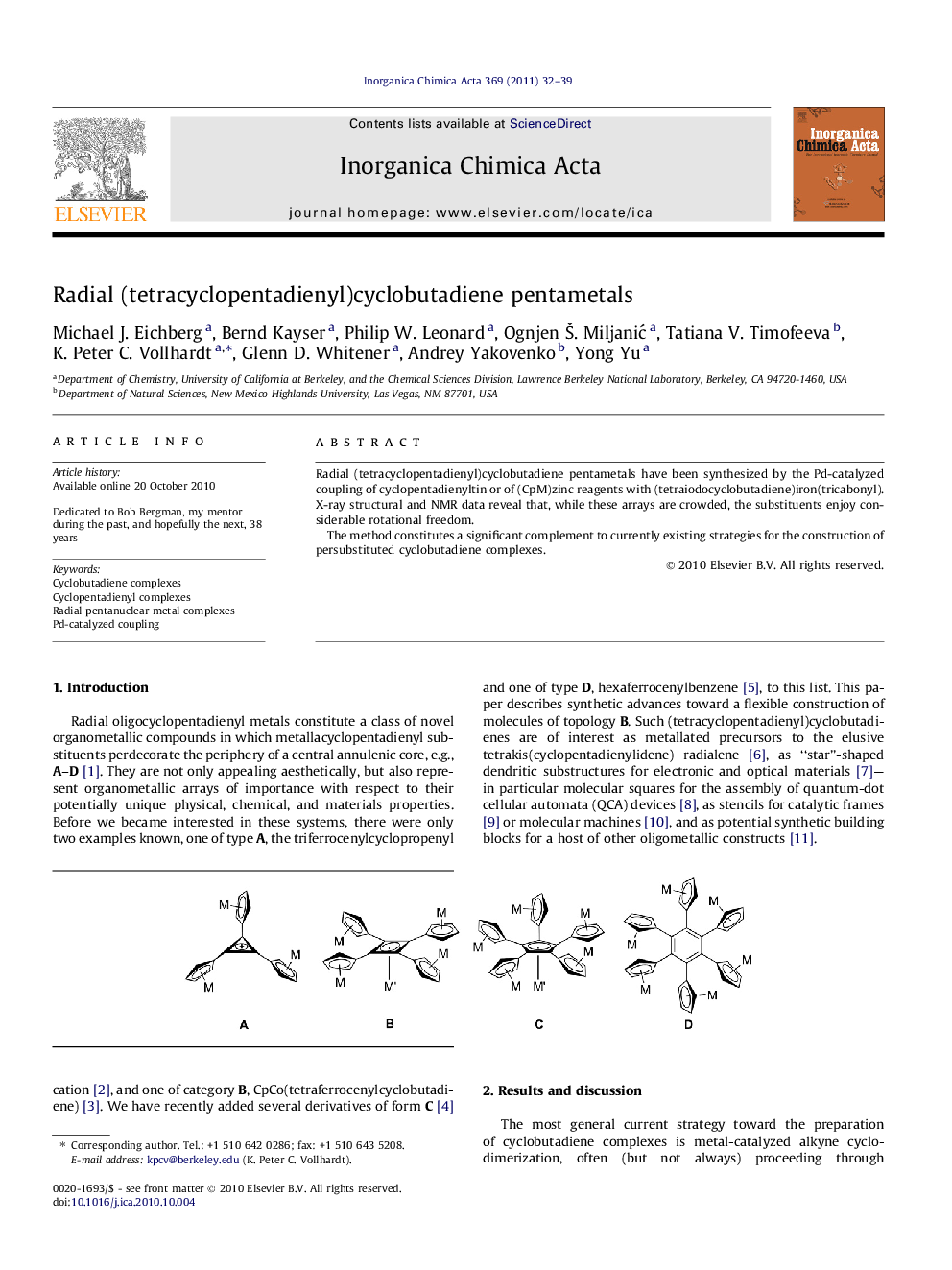| Article ID | Journal | Published Year | Pages | File Type |
|---|---|---|---|---|
| 1307656 | Inorganica Chimica Acta | 2011 | 8 Pages |
Radial (tetracyclopentadienyl)cyclobutadiene pentametals have been synthesized by the Pd-catalyzed coupling of cyclopentadienyltin or of (CpM)zinc reagents with (tetraiodocyclobutadiene)iron(tricabonyl). X-ray structural and NMR data reveal that, while these arrays are crowded, the substituents enjoy considerable rotational freedom.The method constitutes a significant complement to currently existing strategies for the construction of persubstituted cyclobutadiene complexes.
Graphical abstractRadial (tetracyclopentadienyl)cyclobutadiene pentametals have been synthesized by the Pd-catalyzed coupling of cyclopentadienyltin or of (CpM)zinc reagents with (tetraiodocyclobutadiene)iron(tricabonyl). X-ray structural and NMR data reveal that, while these arrays are crowded, the substituents enjoy considerable rotational freedom.The method constitutes a significant complement to currently existing strategies for the construction of persubstituted cyclobutadiene complexes.Figure optionsDownload full-size imageDownload as PowerPoint slideResearch highlights► Pd-catalyzes the four-fold coupling of cyclopentadienyl metals with (tetraiodocyclobutadiene)iron(tricabonyl). ► Radial tetracyclopentadienyl)cyclobutadiene pentametals represent crowded arrays. ► Despite steric crowding, the substituents in radial (tetracyclopentadienyl)cyclobutadiene pentametals enjoy considerable rotational freedom.
